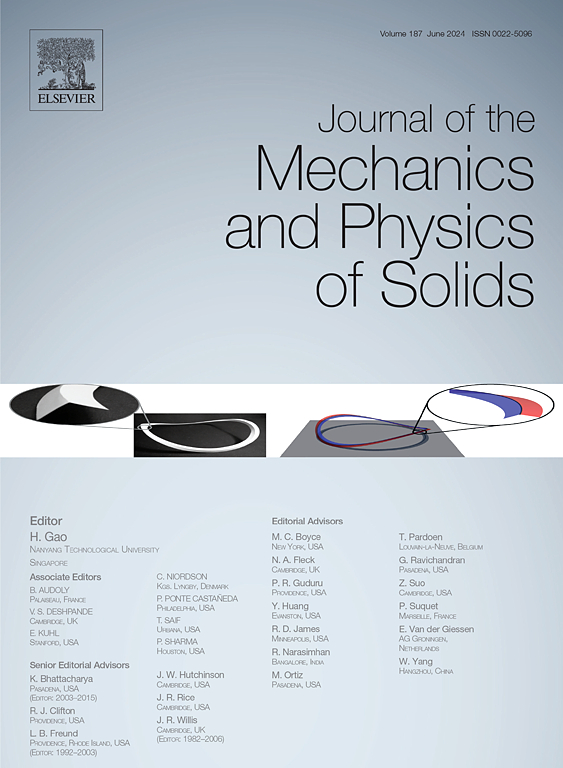Synergistic toughening mechanisms of macro- and micro-structures in nacre: Effects of T-stresses
IF 5
2区 工程技术
Q2 MATERIALS SCIENCE, MULTIDISCIPLINARY
引用次数: 0
Abstract
Through long-term evolution, biological tissues have optimized their components and structures at multiple length scales to meet the requirements of mechanical properties and biological functions. In this study, we explore how the shell macrostructure of nacre and its brick–mortar microstructure are synergistically designed to adapt to external mechanical conditions. We found that the T-stress effect plays a key role in linking the high toughness of nacre with its hierarchical microstructure. When an abalone shell with a convex morphology is subjected to an impact load from a predator, a compressive T-stress arises with the crack initiating in the macroscale nacreous shell. A hierarchical crack bridging model is presented to investigate how the T-stress affects the microscopic stress transfer mechanism and the macroscopic mechanical properties of nacre. It is found that the negative T-stress enhances the interfacial stress of the mineral platelet with waviness, a typical secondary structural feature of the brick–mortar structure. In turn, the amplified interfacial stress further leads to a significant increase in the macroscopic strength and fracture toughness of nacre. This work not only reports a novel toughening mechanism resulting from the structural hierarchy of nacre, but also provides inspirations for the design of biomimetic composite structures with enhanced mechanical properties.

求助全文
约1分钟内获得全文
求助全文
来源期刊
CiteScore
9.80
自引率
9.40%
发文量
276
审稿时长
52 days
期刊介绍:
The aim of Journal of The Mechanics and Physics of Solids is to publish research of the highest quality and of lasting significance on the mechanics of solids. The scope is broad, from fundamental concepts in mechanics to the analysis of novel phenomena and applications. Solids are interpreted broadly to include both hard and soft materials as well as natural and synthetic structures. The approach can be theoretical, experimental or computational.This research activity sits within engineering science and the allied areas of applied mathematics, materials science, bio-mechanics, applied physics, and geophysics.
The Journal was founded in 1952 by Rodney Hill, who was its Editor-in-Chief until 1968. The topics of interest to the Journal evolve with developments in the subject but its basic ethos remains the same: to publish research of the highest quality relating to the mechanics of solids. Thus, emphasis is placed on the development of fundamental concepts of mechanics and novel applications of these concepts based on theoretical, experimental or computational approaches, drawing upon the various branches of engineering science and the allied areas within applied mathematics, materials science, structural engineering, applied physics, and geophysics.
The main purpose of the Journal is to foster scientific understanding of the processes of deformation and mechanical failure of all solid materials, both technological and natural, and the connections between these processes and their underlying physical mechanisms. In this sense, the content of the Journal should reflect the current state of the discipline in analysis, experimental observation, and numerical simulation. In the interest of achieving this goal, authors are encouraged to consider the significance of their contributions for the field of mechanics and the implications of their results, in addition to describing the details of their work.

 求助内容:
求助内容: 应助结果提醒方式:
应助结果提醒方式:


